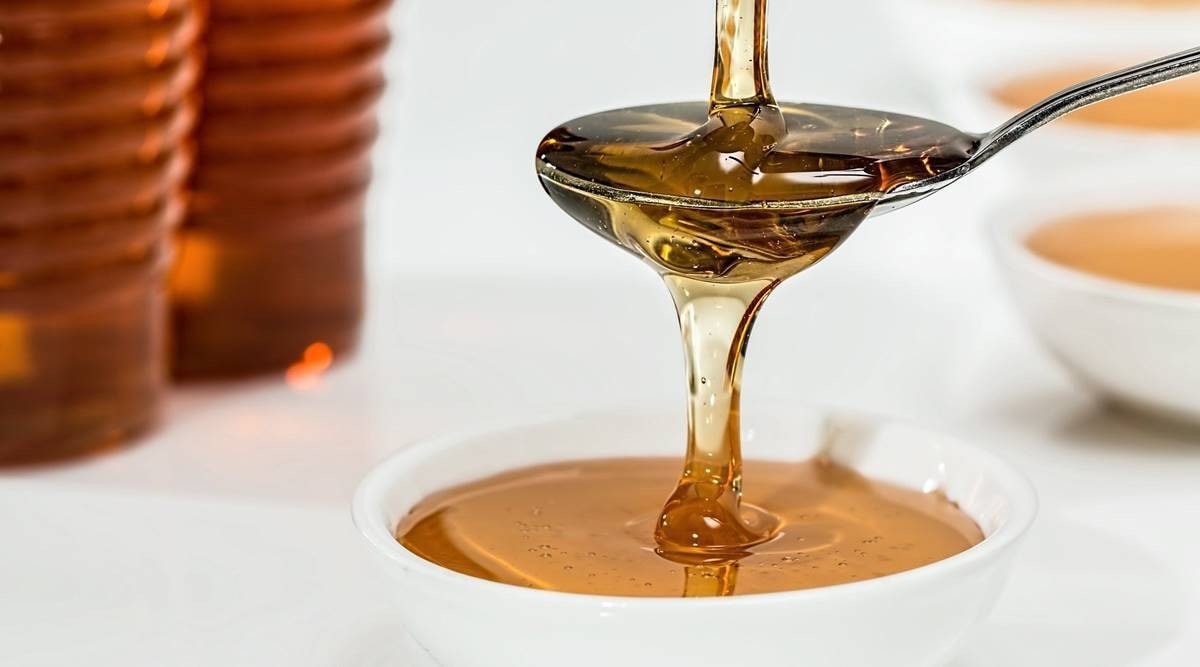 On manufacturing of artificial honey in India by some groups, Narpinder said the government must make NMR (Nuclear Magnetic Resonance) tests for honey compulsory so that only pure honey could be available in the market rather than having sugar-laced syrups by some big companies.
On manufacturing of artificial honey in India by some groups, Narpinder said the government must make NMR (Nuclear Magnetic Resonance) tests for honey compulsory so that only pure honey could be available in the market rather than having sugar-laced syrups by some big companies. WHILE FARMERS of Punjab have been fighting for respectable prices for their crops at Delhi’s borders for the past over four months, bee keepers of the state are fighting another battle for several years now. The yield of honey per colony has gone down manifold around 2-3 times. The reason, according to them, is that flowers of hybrid seed crops like sarson (mustard), sunflower, and berseem (fodder) etc., do not carry much nectar, because of which they are facing heavy losses.
Beekeepers have been writing to the Punjab government as well as Punjab Agriculture University (PAU), Ludhiana, to address this issue by developing varieties which carry good amounts of nectar too. They also blamed that decreasing area under flowering crops.
Dharminder Singh (49), a beekeeper from Dharamgarh village in Mohali district, said: “I have been into beekeeping for the past 25 years and own 600 colonies (boxes) of bees which I keep across the state — in the Shivalik ranges, and outside the Himachal, Rajasthan as per availability of the flowers with the changing seasons. But the yield of honey has come down 2-3 times in all these years.”
“We met the scientists at PAU a number of times and apprised them about how hybrid seeds of flowering crops are hitting the yield of honey because the amount of nectar in the flowers of these hybrid crops is hardly sufficient,” he further said, adding that earlier, they would collect 4-5 times the honey from a box in a single season than what they now collect from one time crop.
Another beekeeper, Simarjeet Billa, said that because of low yield per colony, their income has gotten hit manifold.
Hybrid seed varieties
Narpinder Singh, president of the PAU Progressive Beekeeper Association Punjab and having 600 colonies, said that in India, 80 per cent honey production takes place from the mustard flower. “But in the past 15 years, the average production per colony (per box of bees) has come down from 50 kg to 15 kg during the mustard crop season, which starts from November and continues till March.
He said that as per records of the National Bee Keeping Board, India’s honey production was 1.20 lakh tonnes in 2019-20, which is increasing with every passing year. “Punjab produces around 15,000 to 20,000 tonnes of honey but in reality, bee keepers like us are getting low yield per colony. Due to hybrid seed varieties, the duration of mustard crop has also decreased from 60 to 65 days to 50 to 55 days only,” added Narpinder.
Transportation expenses
He said that beekeepers are required to take the colonies from one place to another during the different flowering season. “Sometimes we are going to Rajasthan during mustard crop season and some time we are taking bees to Himachal during apple flowering season We are bearing so much in transportation charges, then also keeping caretakers at the place where our boxes are kept. Government must come forward to help us in transportation charges when the yield is also going down,” he said, adding that more area must be brought under flowering oil seed crops like sarson in Punjab.
Artificial honey
On manufacturing of artificial honey in India by some groups, Narpinder said the government must make NMR (Nuclear Magnetic Resonance) tests for honey compulsory so that only pure honey could be available in the market rather than having sugar-laced syrups by some big companies. Purity of honey will also provide huge opportunities to the bee keepers to expand their beekeeping, he added.
Reasons for yield production
PAU scientist Dr Jaspal Singh, principal entomologist told The Indian Express, said there are several reasons for low yield and one of the major reasons is the high competition in this field. He said a honey bee can travel upto 3 km to collect nectar. Earlier, there used to be a very low number of colonies in a particular area when now the number of colonies has increased manifold. Secondly, changing weather conditions also played a big role because high temperatures during February-March led to decrease in yield. Also if a crop is not sown timely, the amount of nectar also gets decreased, he added.
PAU records also revealed that oilseeds crops used to be sown on around 5 lakh hectares in Punjab in 1970s and the area has reduced to just 50,000 hectares now, while the number of colonies has increased by 3-4 times now in the state.
Narpinder Singh, a national award winner in beekeeping, said a colony carries around 20,000 to 25,000 bees and a bee has a life cycle of around 40 days. In India, Italian bees are rare.
- The Indian Express website has been rated GREEN for its credibility and trustworthiness by Newsguard, a global service that rates news sources for their journalistic standards.

